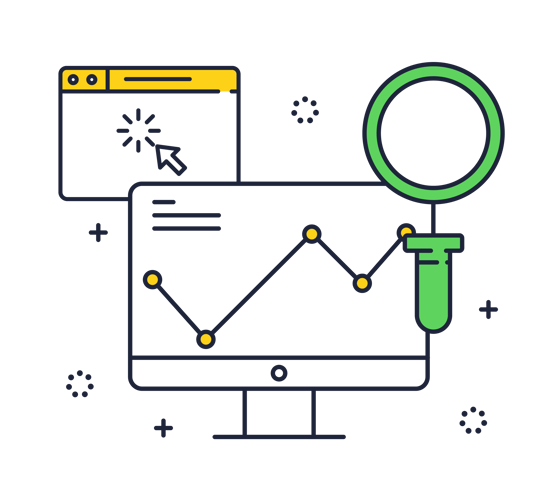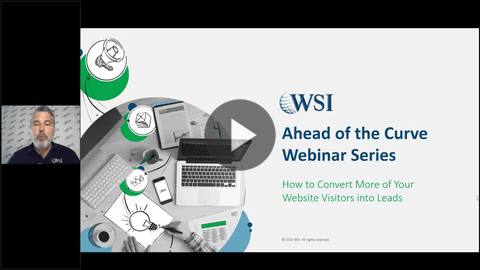In this instalment of WSI’s ongoing series of webinars designed to assist our customers in improving their digital marketing during the COVID-19 pandemic, WSI-certified consultant Chuck Bankoff explains how to enhance lead generation without spending time and money on increasing web traffic. Of course, we all like to see our website traffic grow, but it is really the conversions that count. Chuck talks us through a number of techniques to boost conversion rates.
Why Increasing Conversions is Better than Increasing Traffic
Increased traffic to your website may look good but, unfortunately, may not mean much to your business. The number you want to see increasing is your conversions, even if your number of visitors stays the same. So instead of focusing on increasing traffic and maintaining the same conversion rate, you need to work on improving your conversion rate. Say, for example, you get an average of 12,000 visitors to your site per year, and you have a 1% conversion rate. The 120 paying customers you get as a result may not be enough to meet your business targets - you may need 360 converted customers. Now you could triple your traffic so that you get 360 customers at the same conversion rate, but that is the more expensive and more challenging option. Using the techniques discussed in this webinar, we reveal how you can increase your conversion rate and customer numbers without focusing on your traffic.
Conversion Stuff You Need to Know
If you want to see a threefold increase in conversions, start with some basic principles:
1. Remember that less is more
Don’t overload your audience with information. People consume information online in short, bite-sized pieces. At the same time, don’t ask for too much either: don’t hit the reader with too many forms or requests for contact information upfront. The less information you ask for, the more likely your reader will be to fill out your form.
2. Be careful with pop-ups
Pop-ups can be useful, but they can also be very annoying and drive a potential lead away. There are different ways to trigger a pop-up. Rather than bringing one up as soon as your reader enters your site, wait until they’ve had a chance to look around, then offer the opportunity for more information, a newsletter subscription, etc.
3. Use live chat and chatbots with care
Chatbots are an excellent tool for guiding visitors towards conversion, but there is a right and wrong way to use them. For one thing, never try and convince your audience that your bot is a real person. Another crucial thing to remember is that a chatbot can be used to sort your audience into segments from the moment they enter the site. For example, the bot might ask whether they are existing customers or new visitors and then direct them accordingly.
4. Video storytelling is incredibly effective
The less you give your audience to read, the better. Video content can help to drive conversions, but remember the ‘less is more’ principle. Don’t make your videos too long or try to say too much. Choose short, powerful videos that communicate your brand’s most exciting attractions.
5. Provide proof to back up your brand’s claims
Reviews, testimonials, and case studies are all great for nurturing a sense of trust. Wherever possible, link to references on off-site platforms like Google Reviews, Yelp, Facebook, or LinkedIn. If you have won awards or other industry accreditations, display them proudly!
The Call-to-Action
Once you’ve got your reader to stick around, read some testimonials and show some sustained interest in your brand, the next step is all-important. You must offer a compelling call to action to ensure that they move to the next step. Keep it simple and direct and motivate the reader to click. Your CTA is your moment of truth.
Some important rules to remember are:
- Make it easy to notice
- Keep it above the fold
- Repeat it below the fold
- Use first-person voice
- Use action words
- Evoke a sense of FOMO
- Time the CTA carefully, particularly when using pop-ups.
Campaign killers - how to undermine your best efforts
One way to engineer your online platforms for better conversions is to keep in mind what NOT to do. Here are the prime culprits when it comes to killing digital marketing campaigns:
- Too much text
- Too many links
- Unnecessary required fields
- No email privacy info
- Lack of communication choices
- Inadequate shipping and pricing information
- Error pages, broken links - anything that doesn’t work
Essentially, conversion rate optimization comes down to clear, concise communication that leaves the audience in no doubt about the benefits of following your call to action.
If you would like expert help optimizing your conversion rate and boosting your lead generation efforts, contact WSI, or check out the full webinar below:







